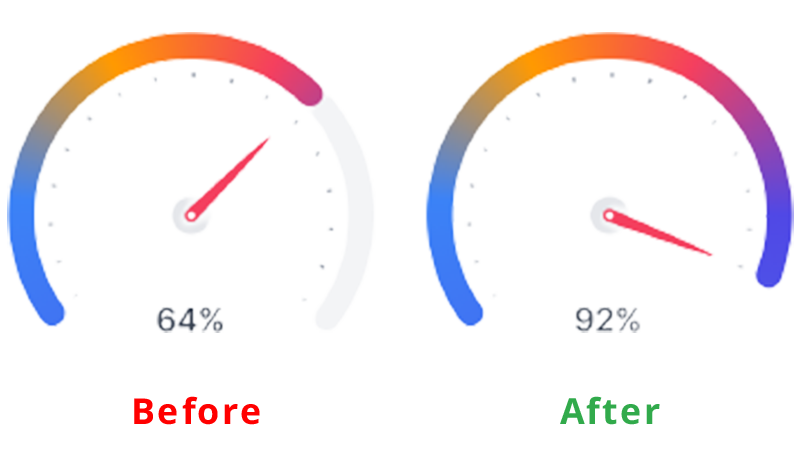Ordinal Data-Definition, Examples, and Interpretation
Published by at August 31st, 2021 , Revised On February 8, 2023
Ordinal data is crucial in data collection and analysis. And, if you want to classify data accurately, you must first understand what ordinal data itself is. That is precisely what we are here for. This blog will take you along the ordinal data journey, discussing its uses, examples, collection, and analysis. But before that, here is a brief description of what data is:
Data is a set or collection of information and facts from which conclusions can be deduced. Data can exist in the different forms-as text, numbers, and figures on either a piece of paper, bytes, and bits stored on electronic devices, or stored in a person’s mind.
Data can be classified as ordinal or nominal. Nominal is a type of data used to label variables without offering any quantitative value. This means there is no specific order. On the other hand, ordinal data, as the name itself suggests, has its variables in a specific hierarchy or order.
Ordinal data is, thus, categorical data with a set scale or order to it.
Examples of Ordinal Data
Have you ever heard of Likert scales? Well, that is one example of ordinal data. Another would be the interval scale.
Let’s discuss what these are for those who are new to these terms.
Likert Scale
Likert scale is a five, sometimes a seven-point scale used by researchers to see how much an individual disagrees or agrees with a particular opinion or statement. For example,
“I believe a complete lockdown should be active immediately to stop the COVID cases from rising.”
Now, this is a statement of opinion, whatever you call it, will have these possible responses;
A Likert scale suggests that an attitude’s strength/intensity is linear, i.e., on a scale extending from strongly agree to strongly disagree, and that attitudes can be quantified.
Each of the five (or seven) responses, for example, would be assigned a numerical value that would be used to assess the attitude under examination.
Apart from calculating and assessing statements of agreement, this scale also measures other variations, such as quality, frequency, importance, and so on.
Interval Scale
Another type of ordinal scale is the interval scale, where every response in the survey is an interval on its own. Classifying employment levels into the professional, mid-career level, intermediate, and entry-level is an example of an interval scale.
In which category do you fall?
- a) Professional/senior level
- b) Mid-level
- c) Intermediate
- d) Entry level
What data collection best suits your research?
- Find out by hiring an expert from ResearchProspect today!
- Despite how challenging the subject may be, we are here to help you.
Categories of Ordinal Variables
The ordinal variables are classified into two main groups, namely: the matched and the unmatched group. This classification is based on pairing up data variables with the same properties and characteristics.
Matching is defined as a technique to check and assess the effect of a treatment. The treatment is done by comparing the non-treated and treated units in a quasi-experiment or an observational study.
The Matched Group
In this category, every member in the data sample is grouped with similar members of another sample with respect to all other variables. This is done to find a better estimation of differences. Two types of tests on the matched category depend on the number of samples under study. These are Friedman 2-way ANOVA and Wilcoxon signed-rank test.
Friedman 2-way ANOVA:
Friedman 2-way ANOVA is a non-parametric method for detecting differences in matched groups of three or more groups. This test was created by Milton Friedman and involves ranking rows together and then considering the values of each rank by columns.
Wilcoxon signed-rank test:
Wilcoxon signed-rank test is a qualitative statistical test used to assess the differences between two sets of matched samples.
The Un-matched Group
The unmatched samples are the independent samples that are selected randomly. The variables here do not depend on the values of all other ordinal variables. Though there are a few exceptional cases where the samples are dependent, most researchers base their analysis on the assumption that they are independent samples.
Following are the tests for the unmatched category:
Wilcoxon rank-sum test:
The Mann-Whitney U test is another name for the Wilcoxon rank-sum test. It is a non-parametric test that is used to compare two sets of independent samples. This test is commonly used to see if two samples are from the same population. The Wilcoxon signed-rank test is a comparable qualitative test that is used on matched samples.
Kruskal-Wallis 1-way test:
This is a non-parametric test that decides whether three or more samples are from the same population. This test, named after William Kruskal and W. Allen Wallis, determines if the median of two or more groups is different.
Why should you use a Plagiarism Detector for your Dissertation?
It ensures:
- Original work
- Structure and Clarity
- Zero Spelling Errors
- No Punctuation Faults

Ordinal Data Analysis and Interpretation
Although both ordinal and nominal data are qualitative variables, their data analysis process is completely different. When it comes to ordinal data analysis, it incorporates the natural ordering of variables so that loss of power can be avoided.
The fact that the parametric analysis median and mode are utilized for data analysis, ordinal variables are completely different from other types of qualitative variables. This is related to the assumption that ordinal data does not have equal distance between categories. As a result, descriptive statistics appropriate for nominal data, as well as positional measurements like the median and percentiles, should be employed instead.
In some circumstances, using parametric statistics for ordinal data variables with methods that are close substitutes for mean and standard deviation may be permitted.
Descriptive Statistics
These are some of the descriptive statistics you can use with ordinal data:
- The frequency distribution in percentages or numbers. To have a better understanding of your data, make a frequency distribution table that shows how many times each response was chosen
- The mode or median to determine the central tendency. The majority of your values are found in the central tendency of your data collection. The three most widely used metrics of central tendency are the mode, mean, and median
- The range to show variability. You can use the lowest, maximum, and range to examine the variability of your data collection. For this, you will need to numerically code your data.
Inferential Statistics
These tests help you test scientific hypotheses about your data. These statistical tests for ordinal data emphasize the rankings of your measurements and are called non-parametric tests. The parametric tests, however, are used when the data at hand fulfil certain criteria, like a normal distribution.
Note: Non-parametric tests evaluate ranks or medians while parametric tests assess means.
Some of the statistical tests you can use for ordinal data depending on the number and type of samples are:
- Mann-Whitney U test (Wilcoxon rank-sum test)-compares the addition of rankings of scores
- Mood’s median test- makes a comparison between medians
- Kruskal–Wallis H test-compares mean rankings of the scores
Ordinal data, as the name itself suggests, has its variables in a specific hierarchy or order. It is, thus, categorical data with a set scale or order to it.
Nominal data is used to name variables but does not provide a quantitative value. On the other hand, ordinal data, as the name itself suggests, has its variables in a specific hierarchy or order.
Ordinal data is assessed with inferential and descriptive statistics:
1) Inferential Statistics
Some of the statistical tests you can use for ordinal data depending on the number and type of samples are:
• Mann-Whitney U test (Wilcoxon rank-sum test)
• Mood’s median test
• Kruskal–Wallis H test
2) Descriptive Statistics
These are some of the descriptive statistics you can use with ordinal data:
• The frequency distribution in percentages or numbers
• The mode or median to determine the central tendency
• The range to show variability
It is the data set where most of the values lie. The three most widely used metrics of central tendency are the mode, mean, and median
The ordinal variables are classified into two main groups, namely: the matched and the unmatched group. This classification is based on pairing up data variables with the same properties and characteristics.
The Matched Group
In this category, every member in the data sample is grouped with similar members of another sample with respect to all other variables. This is done to find a better estimation of differences.
The Un-matched Group
The unmatched samples are the independent samples that are selected randomly. The variables here do not depend on the values of all other ordinal variables. Though there are a few exceptional cases where the samples are dependent, most researchers base their analysis on the assumption that they are independent samples.
The two most common ordinary scales examples are:
Likert Scale
Likert scale is a five, sometimes a seven-point scale used by researchers to see how much an individual agrees or disagrees with a particular opinion or statement.
Interval Scale
Another type of ordinal scale is the interval scale, where every response in the survey is an interval on its own.












